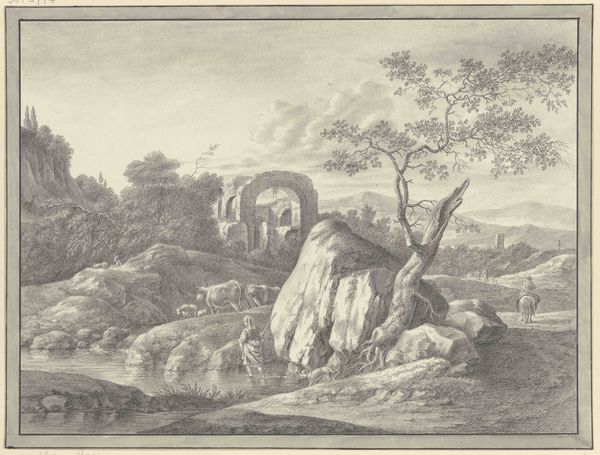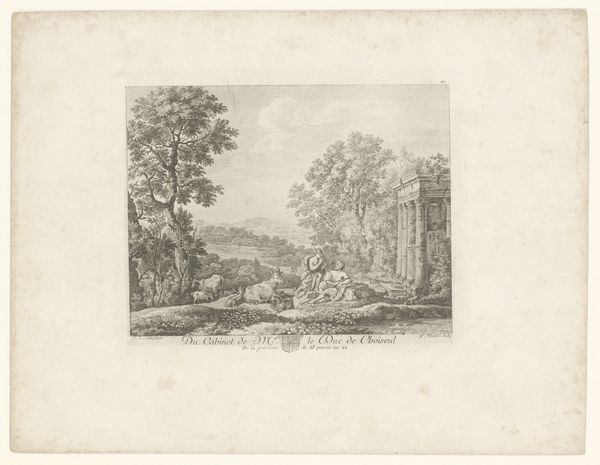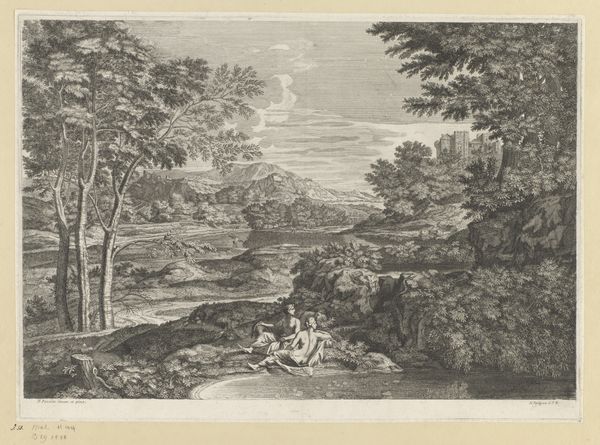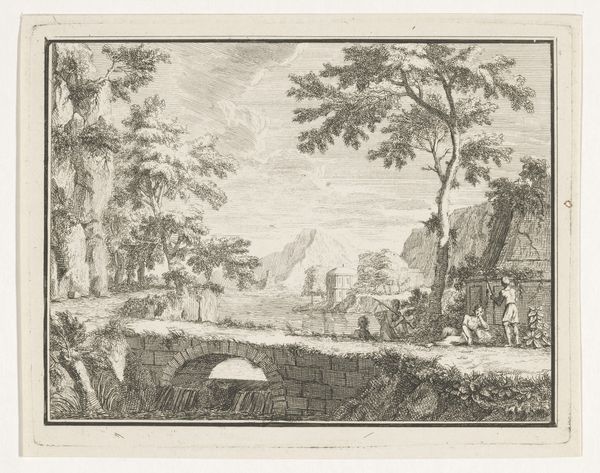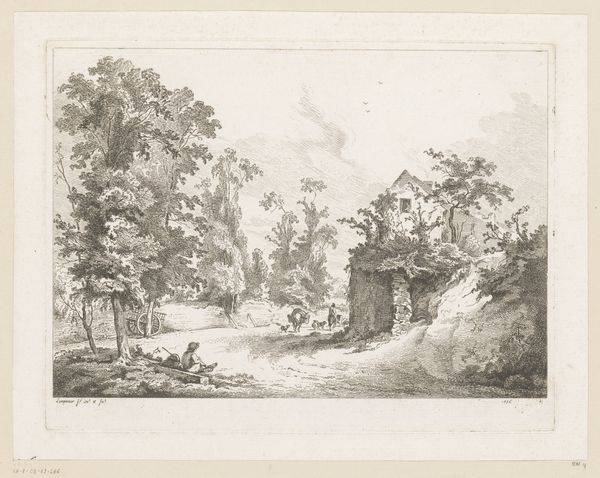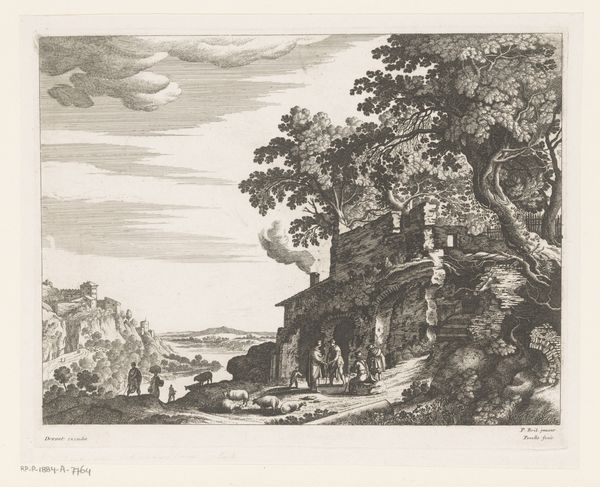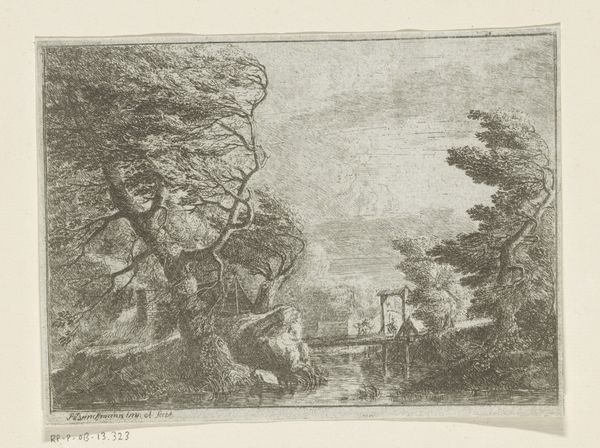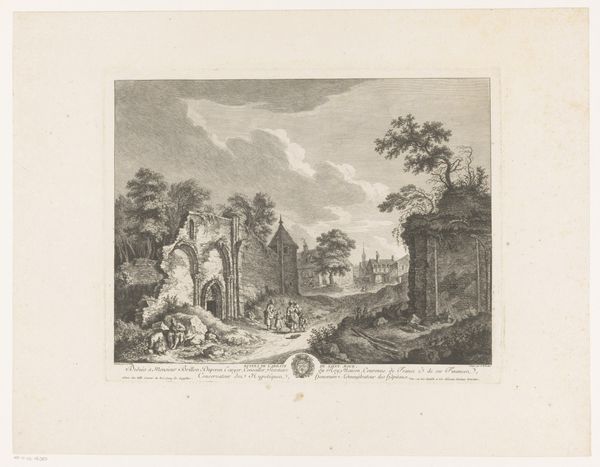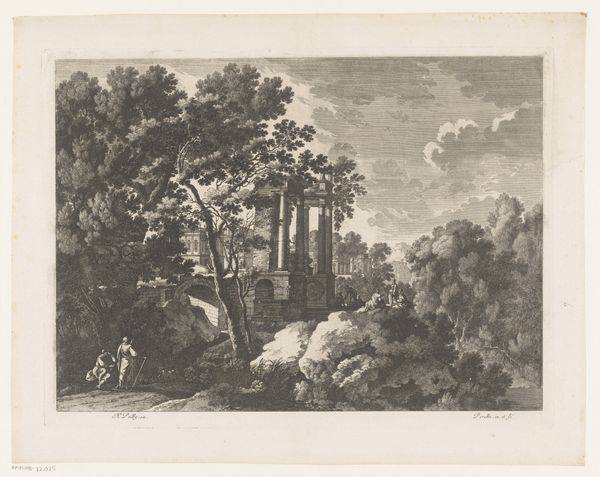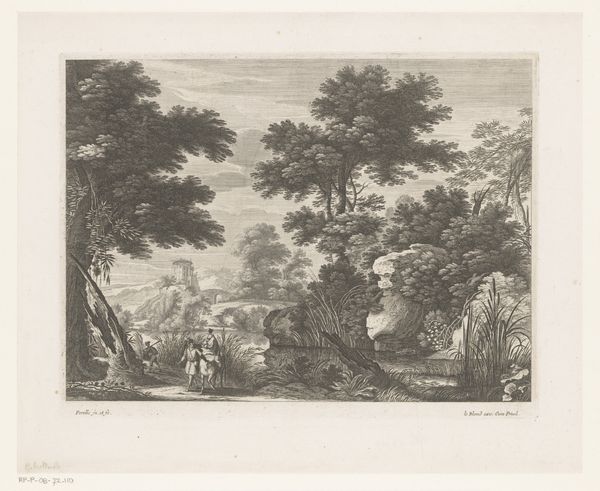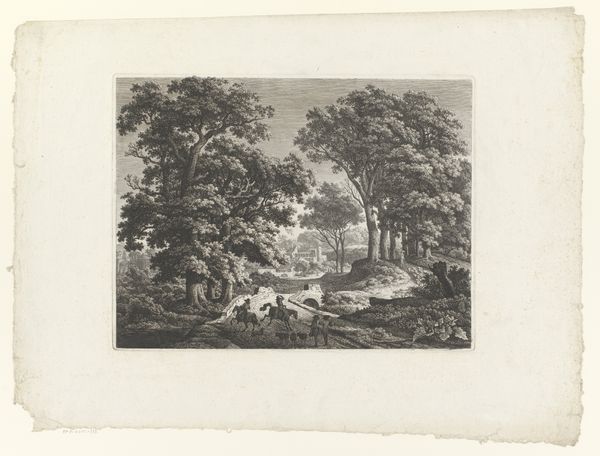
print, etching, engraving
#
baroque
# print
#
etching
#
landscape
#
history-painting
#
engraving
Dimensions: height 110 mm, width 155 mm
Copyright: Rijks Museum: Open Domain
Editor: This is "Heuvelachtig landschap met huizen achter ommuring", or "Hilly landscape with houses behind a wall", created sometime between 1612 and 1686 by Henri Mauperché. It's an etching, so the labor involved in creating the matrix from which this image comes seems really important. What strikes you about it? Curator: The most immediate element is the contrast between the delicate detail achieved through etching and engraving, used here to depict a fairly romantic, even theatrical landscape. Think about the labor necessary to produce multiple impressions versus a single painted image. Editor: How would the context that these prints existed within have shaped Mauperche's work and his reception? Curator: We need to think about who was consuming these prints. Were they destined for wealthy collectors who could afford original paintings, or were they intended for a wider audience, offering a glimpse into landscapes and narratives otherwise inaccessible to them? This landscape tradition really played a role in the creation of national identity as well. The image making itself, especially via these techniques, helped create a national artistic identity. Editor: So, you're saying that prints democratized art but also played a role in forming cultural narratives? Curator: Exactly. The availability of prints like these shaped perceptions and solidified ideas about landscape, ownership, and beauty and cultural identity. The labor involved wasn't just artistic, but ideological too, reinforcing particular class structures through production and ownership of a material good. What is depicted versus how the etching looks contributes a narrative itself. Editor: That gives me a totally different way to think about landscape prints. Curator: Considering the materials, labor, and circulation of art changes how we understand the art.
Comments
No comments
Be the first to comment and join the conversation on the ultimate creative platform.
